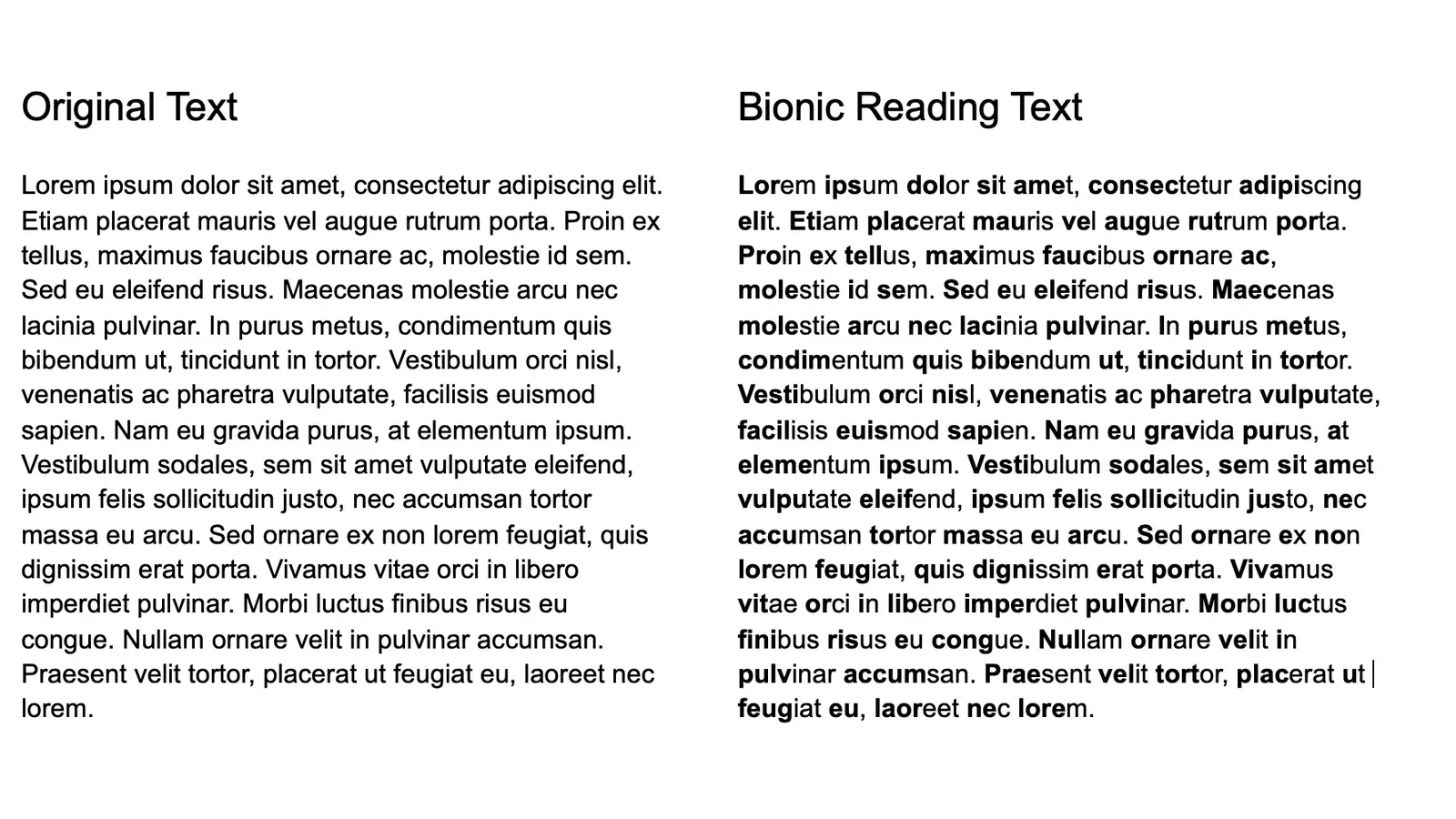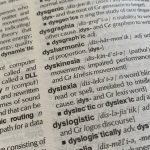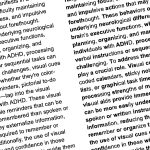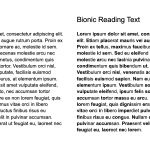Introduction
In today’s fast-paced digital world, the sheer volume of information has pushed the human brain to its processing limits. Amidst this content deluge, the Bionic Reading method emerges as an innovative strategy to help individuals optimise their reading habits. This article delves into the intricacies of the Bionic Reading method, its application, and its efficacy.
What is Bionic Reading?
Bionic Reading is a contemporary reading approach designed to enhance our comprehension and retention abilities. As the name suggests, it attempts to augment our natural reading process, enabling a more effective assimilation of information, especially in digital platforms.
In essence, Bionic Reading is structured to emphasise certain parts of the text, making it easier for the reader to identify key points and establish a hierarchy of information. This is achieved by using visual cues, such as bolding, highlighting, or varying font sizes. By doing so, the method aids the reader in focusing on the most relevant segments of the content, streamlining the absorption of knowledge.
How to Use Bionic Reading
Structured Text Layout: Begin by breaking down the content into a structured format. This could mean separating headings from body text or using different font styles for different sections of the content.
Highlight Key Points: Identify the most critical parts of the text and highlight them. This could mean bolding key sentences or using coloured text to make them stand out.
Create a Hierarchy: Once you have highlighted the key points, establish a hierarchy of information. This means determining which points are primary, secondary, and so on. For example, primary points can be bolded, secondary points can be italicised, and tertiary points can be underlined.
Skim Through the Text: Before diving deep into the content, quickly skim through the visually emphasised parts. This provides an overview and a mental framework for what you are about to read.
Deep Reading: Now, delve deeper into the content, ensuring that you read and understand the highlighted parts first before moving on to the detailed text. This ensures that you have grasped the primary ideas before diving into the nuances.
Revisit and Reflect: After reading, revisit the highlighted portions for a quick recap. This reinforcement aids in long-term retention.
Does Bionic Reading Work? Is Bionic Reading Legit?
The efficacy of the Bionic Reading method primarily rests on cognitive science and human attention patterns. There are several reasons why this approach is gaining popularity and validation:
Catering to Modern Reading Patterns: Digital content has changed the way we read. Many studies show that online readers tend to skim content rather than reading it in-depth. Bionic Reading facilitates this skimming behaviour by emphasising the most critical parts of the text, ensuring that even if a reader is skimming, they are capturing the essence of the content.
Enhanced Focus: The human brain is naturally drawn to variations. By providing visual cues like bolding or highlighting, Bionic Reading captures the reader’s attention and keeps them engaged.
Improved Comprehension and Retention: By focusing on the essential parts of the content first, readers can build a framework of understanding, which helps in comprehending the details that follow. This structured approach aids in better retention of information.
Empirical Validation: Many digital platforms and online publications have adopted the Bionic Reading method, reporting increased engagement and understanding among their audience. Furthermore, preliminary research indicates that readers using this approach show improved comprehension and recall compared to traditional reading.
However, it’s worth noting that Bionic Reading may not be a one-size-fits-all solution. While it suits the digital reading landscape, it may not replace deep, immersive reading that many prefer for novels or dense academic texts. Moreover, the effectiveness can vary based on the individual’s reading style and the nature of the content.
Conclusion
The Bionic Reading method offers a promising solution to the challenges posed by the digital age’s information overflow. It caters to modern reading habits, enhancing comprehension and retention. While it might not replace traditional reading methods entirely, its growing adoption and preliminary validation suggest that it’s a tool worth considering for anyone looking to optimise their reading experience in the digital age.
Further reading
The Shallows: What the Internet Is Doing to Our Brains by Nicholas Carr
A Pulitzer Prize finalist, this book delves into the ways the internet is reshaping our neural pathways, transforming how we think and read. Carr argues that our dependence on the internet diminishes our ability for deep reading and contemplation. It provides a comprehensive look at how digital media is affecting our cognitive processes.
Proust and the Squid: The Story and Science of the Reading Brain by Maryanne Wolf
Wolf explores the neurological processes involved in reading, discussing both its evolution and the brain’s plasticity. Given the rapid shift to digital mediums and the ensuing changes in reading habits, this book offers an insightful look into the science of reading, making it relevant to the topic of Bionic Reading.
Words Onscreen: The Fate of Reading in a Digital World by Naomi S. Baron
Baron investigates the pros and cons of reading from screens versus printed pages. She delves into the implications of the digital age on reading, comprehension, and retention, emphasising how screen reading often promotes skimming and reduces deep, immersive reading. The book provides a deep dive into the challenges and opportunities of reading in our contemporary, screen-dominated world.
Nieman Lab
Affiliated with Harvard University, Nieman Lab explores the future of news and journalism in the digital age. They often delve into topics such as how people consume content online, the effects of digital formats on comprehension, and the evolution of online reading habits. Their articles often touch upon the challenges and innovations in the digital reading landscape.
Website URL: www.niemanlab.org
Digital Reader
This site offers news, reviews, and insights related to e-reading, ebooks, and digital publishing. Digital Reader covers the technology and tools behind online reading and how these platforms influence our reading habits and comprehension.
Website URL: www.the-digital-reader.com
Reading Rockets
While Reading Rockets primarily targets teaching kids how to read, they feature a plethora of research-based strategies, lessons, and activities designed to help children learn how to read. With the increasing integration of digital tools in education, they often explore the intersections of technology and reading, making it relevant to our topic of interest.
Website URL: www.readingrockets.org
Author Profile
Latest entries
 Resources2024.01.25Animals That Start With The Letter N
Resources2024.01.25Animals That Start With The Letter N Bionic Reading2023.09.22Bionic Reading for Dyslexia: A Potential Bridge to Enhanced Comprehension
Bionic Reading2023.09.22Bionic Reading for Dyslexia: A Potential Bridge to Enhanced Comprehension Bionic Reading2023.09.21Bionic Reading for ADHD: Harnessing the Power of Visual Cues to Aid Focus and Comprehension
Bionic Reading2023.09.21Bionic Reading for ADHD: Harnessing the Power of Visual Cues to Aid Focus and Comprehension Bionic Reading2023.09.20Bionic Reading Method
Bionic Reading2023.09.20Bionic Reading Method




